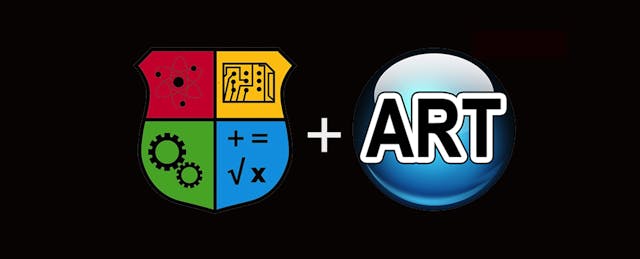Giving children the tools to succeed in a rapidly changing technology-based economy is the key to ensuring their future success. Making sure kids are excited by science, technology, engineering, and math (STEM) concepts hasn’t been America’s strong suit, but with the “STEAM” movement, we have a shot at engaging kids like never before.
What is STEAM?
STEAM, an interdisciplinary spin on STEM that includes an “A” for art, is an integral part of influencing kids’ interest in STEM by allowing kids to explore these subjects through hands-on making. STEAM is a popular movement that was founded by Georgette Yakman in 2007 to promote and integrate design and art in STEM fields. She defined the movement as "Science and Technology, interpreted through Engineering and the Arts, all based in elements of Mathematics.” Since then, STEAM has become widely supported by advocates including Sesame Street and the Rhode Island School of Design.
The STEAM movement has inspired new school systems, companies and organizations to create new and engaging learning experiences that have captured kids’ interest. For example, Institute of Play, one of the premiere design-based non-profits, has been building learning experiences focused on games and play mechanics to engage kids in educational spaces. Learning Design Strategist Eliza Spang from Quest to Learn (one of Institute of Play’s first initiatives) talks in this video about how excited kids get in this type of learning environment: “They’re jumping out of their seats; they’re yelling and talking about triangles and the Pythagorean theorem, and you can see the energy in the classroom—it is very specific noise geared toward learning goals.”
Kids yelling about the Pythagorean theorem sounds like the STEAM movement is doing something right. New toys and gadgets are creating the same type of excitement and inspiration for kids. Makey Makey, an invention kit that allows kids to explore building creative technology projects with the world around them, inspires kids to make everything from banana pianos to game controllers through hands on learning, outside of traditional learning environments. But what if you want to STEAM up your own classroom?
Looking to find STEAM projects for your kids?
Learning STEM subjects in a classroom setting isn’t always accessible or inviting for all learning styles. Reading physics or circuit theory books typically does not sustain prolonged engagement but building a lamp or speaker will. In the process of making a tangible project, kids are invested in making their creation come to fruition while learning the fundamental building blocks of many STEM subjects, as well as creative subjects such as design thinking.
Many DIY open hardware and maker companies such as Sparkfun and Adafruit have sparked a movement in creating new modes of learning creatively, especially in STEM fields, through hands on projects. Why? You can learn new skills by building.
My own startup, blink blink, focuses on designing playful and collaborative opportunities to engage kids with creating arts, crafts, and fashion projects with electronics and circuits. Instead of learning about circuits before ever building one, kids begin engaging immediately by building a card that incorporates paper circuits and switches. Our design principles and philosophies encompass creating kits that act as teaching tools for a variety of learning styles. By building arts and crafts projects embedded with technology, kids learn the basics of circuit theory, but they also begin to learn a multitude of other skills: problem solving skills while debugging, critical thinking, and collaboration.
But... Why go from STEM to STEAM?
Transforming learning environments from STEM to STEAM changes the way kids see and think about STEM subjects. Art provides the typical STEM classroom new avenues of fun and playful possibilities.
During blink blink workshops, we encourage exploration; and therefore, we lay out all of the art supplies alongside the creative supplies, allowing kids to see that technology is just as inviting and accessible as art tools. And kids usually jump right in! Instead of interacting with the technology as foreign objects, STEAM inspires kids to begin incorporating technology into their creative process immediately.
Kristin Bell, an Art Teacher at Hamilton High School North Nottingham, explains how bringing blink blink creative circuit kits into her art classroom inspired her kids. "The blink blink tool brought a fresh perspective on technology and the arts. It inspired and encouraged my kids to become involved with technology. My students enjoyed both the creative process as well as problem solving to make final LED paintings."
Carrying out STEAM projects also fosters collaboration--an innate characteristic of kids; although, kids probably refer to it as playing with their friends and family. Hands-on projects provide kids with the opportunity to build something with others and to share ideas and gain new insights through collaboration. They will be learning communications and collaboration skills--necessary skills for creating future STEM leaders.
It is widely supported that STEM subjects must be a vital component of kids education, but there has to be a way to get them excited about them. The STEAM movement is allowing kids to engage with STEM creatively; they’re lighting up their crafts with LEDs, learning in game based environments, and making musical instruments out of bananas - all while learning a variety of new subjects and skills.


